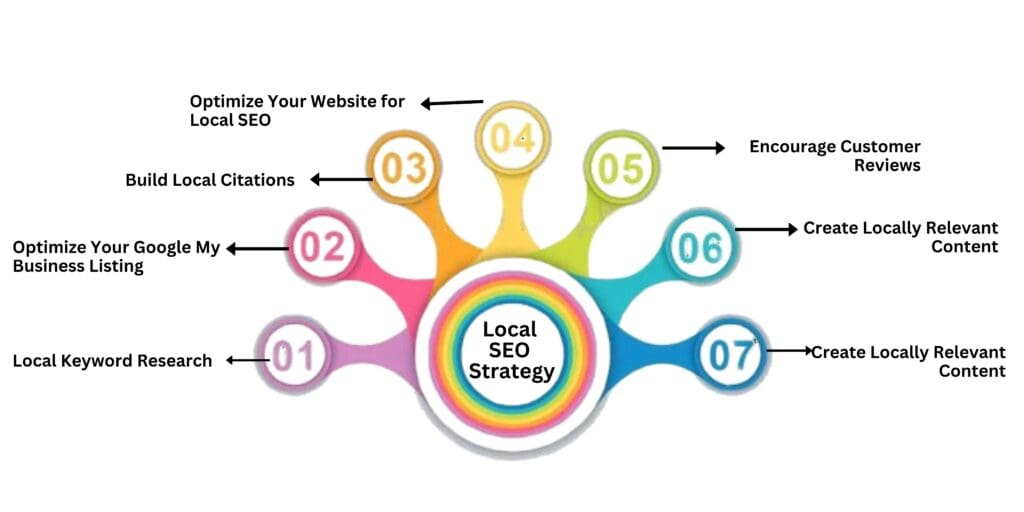In today’s digital-first world, having a strong online presence is no longer optional—especially for small businesses targeting local customers. A well-thought-out local SEO strategy not only increases your visibility in search engine results but also drives more traffic to your website and, ultimately, boosts sales.
If you’re a small business owner in the United States wondering how to stand out locally, this guide from Small Biz Web Designs is here to walk you through actionable steps for crafting a winning local SEO strategy tailored to your unique needs.
What is Local SEO?
Local SEO (Search Engine Optimization) is the process of optimizing your online presence to attract more business from relevant local searches. Whether it’s someone Googling “coffee shop near me” or looking for services specific to their city, local SEO ensures your business shows up when and where it matters most.
This involves optimizing your website, managing online listings, and engaging with your community—all with the goal of dominating your local search results.
Why Does Local SEO Matter for Small Businesses?
Here’s why small businesses, like yours, can’t afford to ignore local SEO:
- Increased Visibility: Local SEO ensures your business appears at the top of local search results, making it easier for potential customers to find you.
- Targeted Traffic: By optimizing for local searches, you’ll attract customers who are actively looking for your services in your area. These are the leads most likely to convert.
- Competitive Edge: With a strong local SEO strategy, you can outrank competitors who aren’t leveraging local search effectively.
Steps to Create a Successful Local SEO Strategy
Let’s dive into the key steps to craft an effective local SEO strategy for your small business:

1. Conduct Local Keyword Research
Keyword research is the foundation of any successful SEO strategy. Here’s how to get it right:
- Find Relevant Keywords: Use tools like Google Keyword Planner or SEMrush to identify what local customers are searching for. Keywords that include your city, neighborhood, or specific services work best (e.g., “best pizza in Denver”).
- Spy on Competitors: Analyze the keywords your competitors are ranking for to identify gaps and opportunities in your strategy.
- Leverage Long-Tail Keywords: Target phrases like “emergency plumber in Austin” instead of just “plumber.” Long-tail keywords often have less competition and attract highly motivated customers.
2. Optimize Your Google My Business Listing
Your Google My Business (GMB) listing is your local SEO MVP. Here’s how to make it work for you:
- Claim and Verify: If you haven’t already, claim your GMB listing and complete the verification process to manage your business info on Google.
- Fill Out Everything: Include your name, address, phone number (NAP), hours, website, and a detailed description. Keep your NAP consistent across platforms.
- Add Photos and Posts: Upload high-quality images and post updates about events, promotions, or changes to your business. A well-maintained profile attracts more engagement.
3. Build Local Citations
Citations—mentions of your NAP on other websites—boost your credibility and visibility. Here’s how to manage them effectively:
- List on Popular Directories: Get your business listed on directories like Yelp, TripAdvisor, and Yellow Pages.
- Niche Directories: Find industry-specific directories relevant to your business. For example, restaurants can benefit from platforms like OpenTable.
- Be Consistent: Ensure your NAP is identical across all directories. Inconsistencies can hurt your rankings and confuse potential customers.
4. Optimize Your Website for Local SEO
Your website is your digital storefront. Here’s how to make it search-engine and user-friendly:
- Use Local Keywords: Naturally integrate keywords into your site’s content, headings, meta descriptions, and image alt text.
- Location-Specific Pages: If you serve multiple areas, create unique pages for each, tailored with local information and keywords.
- Mobile Optimization: Since most local searches happen on mobile, ensure your site is fast, responsive, and easy to navigate.
5. Encourage Customer Reviews
Online reviews are gold for local SEO. Here’s how to build and manage them:
- Ask for Reviews: Politely ask happy customers to leave reviews on Google or Yelp after a purchase.
- Respond to All Reviews: Thank customers for positive feedback and professionally address negative ones. This shows you care about their experience.
- Feature Positive Reviews: Share glowing testimonials on your website and social media for added credibility.
6. Create Locally Relevant Content
Content that speaks to your local audience can position your business as a community leader.
- Write About Local Events: Blog about local happenings, community news, or tips that resonate with your audience.
- Use Local Keywords: Include phrases like “best landscaping services in Phoenix” in your content.
- Partner with Local Influencers: Collaborate with local influencers or bloggers to extend your reach and credibility.
7. Monitor and Refine Your Local SEO Strategy
SEO isn’t a one-and-done deal. Regular monitoring and adjustments are key to success.
- Track Performance: Use tools like Google Analytics and Google My Business Insights to see what’s working and where you can improve.
- Refine Keywords: Adjust your keywords based on search trends and performance data.
- Stay Updated: Keep up with changes in Google’s algorithm and local SEO best practices.
Why U.S. Small Businesses Can’t Ignore Local SEO
If you’re running a small business in the United States, local SEO is one of the most cost-effective ways to grow. Whether you’re a boutique in Boston, a mechanic in Miami, or a bakery in Brooklyn, local SEO ensures you’re seen by the right audience at the right time.
Conclusion
A strong local SEO strategy can do wonders for your business—boosting your visibility, driving targeted traffic, and helping you stand out in your community. By conducting thorough keyword research, optimizing your GMB listing, building local citations, creating local content, and encouraging reviews, you can build a solid online presence that brings measurable results.
Start implementing these steps today with Small Biz Web Designs and watch your business thrive in your local market. Your customers are searching—make sure they find you.

